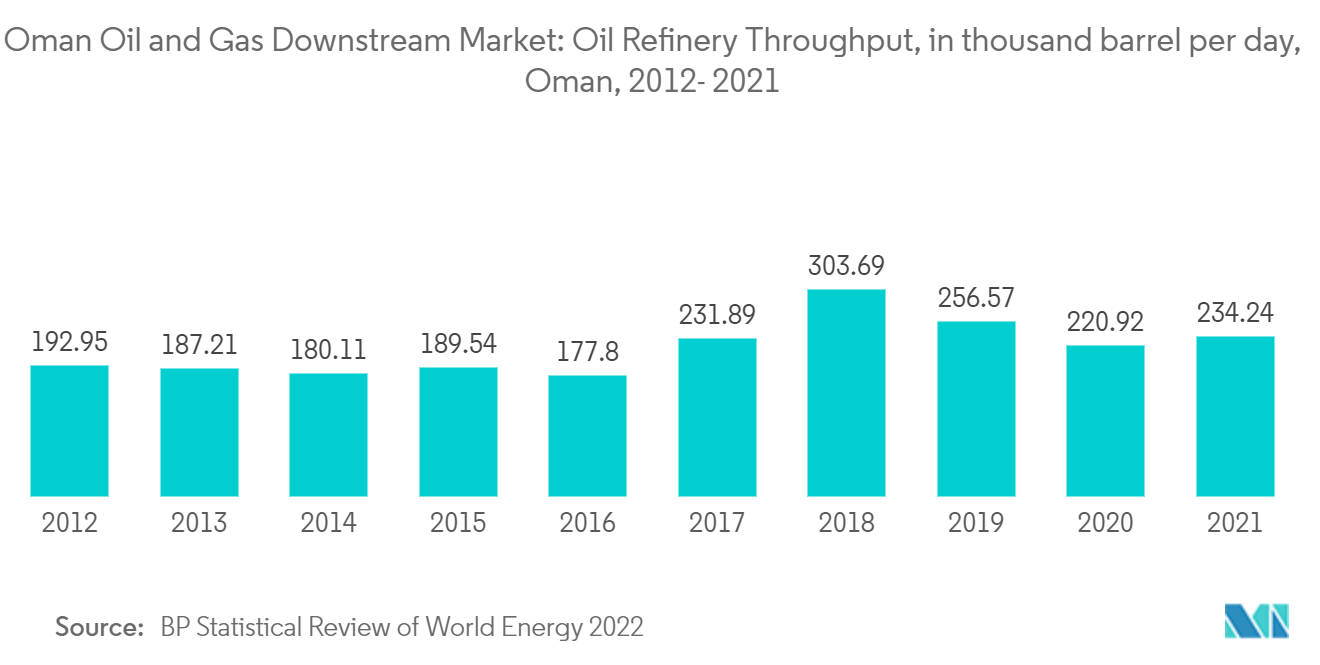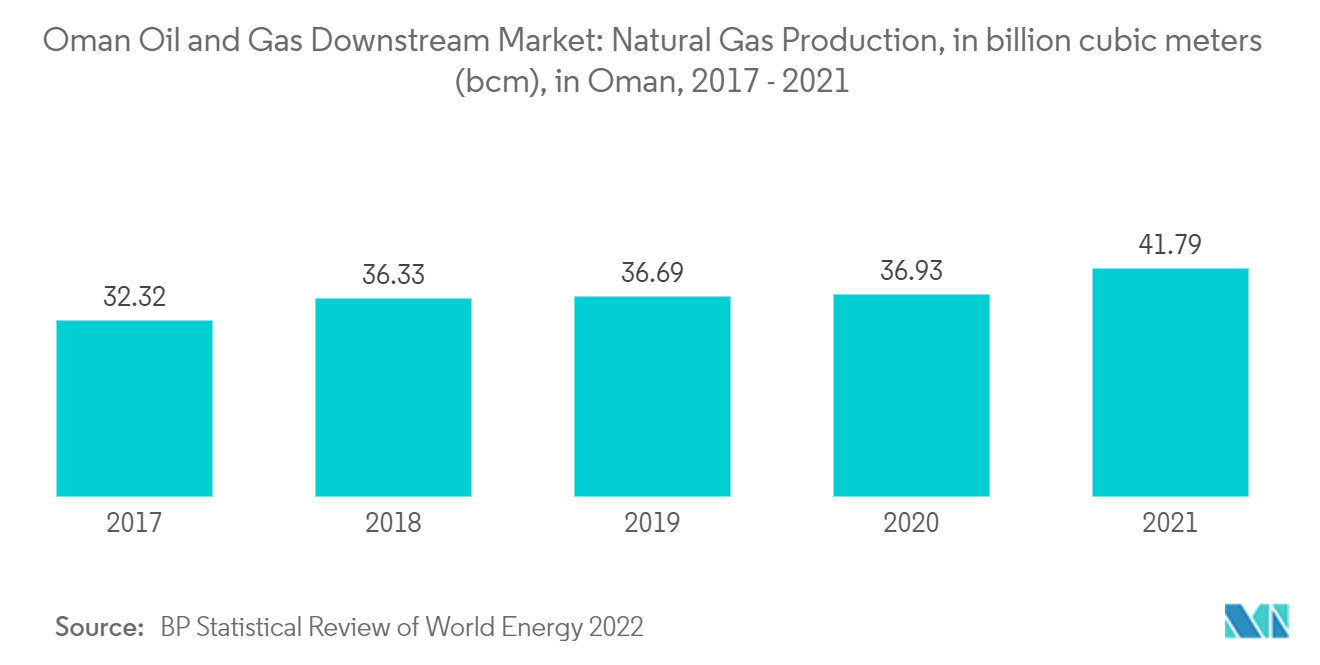Market Trends of Oman Oil And Gas Downstream Industry
Increasing Number of New Refineries to Witness Significant Growth
- Oil has been the driving force of the Omani economy since the time Oman began commercial production in 1967. The sector faced a brutal hit by the 2020 oil price crash but is recovering through government support. The Omani government announced a budget of USD 22.4 billion in the fiscal year 2022 for supporting the nation's oil and gas industry. It, in turn, culminates in the growth of the oil and gas downstream sector.
- In Oman, the capacity of refinery throughput increased to 234 thousand barrels daily (kb/d) by 2021, from 193 kb/d in 2012, and the refinery throughput increased by 21.2% during this period. As of 2020, Oman is producing 971 thousand barrels of oil per day, which is expected to grow steadily during the forecast period. An increase in oil production is expected to boost the downstream sector in the country.
- In July 2021, Ras Madrakah Petroleum Industry Co. and Yanchang Petroleum International contracted Genoil Inc. to deliver technology licensing for a 200,000-b/d refinery built on Oman's eastern coast at Duqm Special Economic Zone. As of December 2022, the Duqm Refinery is almost 96% complete and is expected to start operations during 2023.
- The 230,000 barrels/day Duqm refinery project is segmented into three units. The first unit consists of the ten main processing units of the refinery. The teams can produce diesel, aviation fuel, naphtha, liquefied petroleum gas, sulfur, and petroleum coke. The 2nd unit is focused on facilities and services. In contrast, the 3rd unit includes storage and export facilities for liquid and bulk petroleum materials at the Duqm port, crude oil storage facilities in Ras Markaz, and an 81 km long pipeline for transporting crude oil from Ras Markaz to the refinery.
- Moreover, in August 2020, Oman's Sohar Asphalt LLC was awarded the Engineering, Procurement, and Construction (EPC) contract for the bitumen refinery at Sohar Industrial Port. The value of the signed agreement is USD 408 million. The five new units being installed are a vacuum distillation unit (VDU), a crude distillation unit (CDU), a bitumen blowing unit (BBU), and a hydrocracker unit (HCU). The project is expected to get commissioned by 2023.
- Hence, the refinery throughput capacity is expected to increase significantly during the forecast period due to reduced bottlenecking and the possibility of new refineries and petrochemical plants. Owing to the above factors, an increasing number of refineries across Oman will lead to the growth of the oil and gas downstream market during the forecast period.

Increasing Investments in the Downstream Sector Driving the Market Demand
- Oman is witnessing increasing investments in its oil and gas sector. The investments made by local oil and gas companies are shaping the country's economy.
- Oman created Energy Development Oman (EDO) to represent the government's stake in PDO and raise project financing. In August 2021, EDO approached various international banks to raise USD 3 billion in debt to finance Petroleum Development Oman (PDO) and Oman's gas operations.
- Gas production in Oman increased by 29.3%, from 32.3 bcm in 2017 to 41.8 bcm in 2021. Increased natural gas production is expected to provide a cheap natural gas supply as a feedstock for manufacturing petrochemicals. It is expected to boost the petrochemical sector during the forecast period.
- In November 2021, Duqm Refinery and Petrochemical Industries Company (DRPIC) announced that its Duqm refinery in southern Oman is anticipated to begin its operations in the first quarter of 2023. The project is a joint venture between the Oman government and Kuwait Petroleum International (KPI). The project includes an investment cost of USD 8 billion and a processing capacity of 230,000 barrels per day (bpd).
- Similarly, in December 2022, Omani energy company OQ signed a joint development agreement with Saudi Basic Industries Corporation (SABIC) and Kuwait Petroleum International (KPI) to build a petrochemical complex in Duqm.
- Therefore, based on the above-mentioned factors, increasing investments in the downstream sector are expected to drive Oman's oil and gas market during the forecast period.

